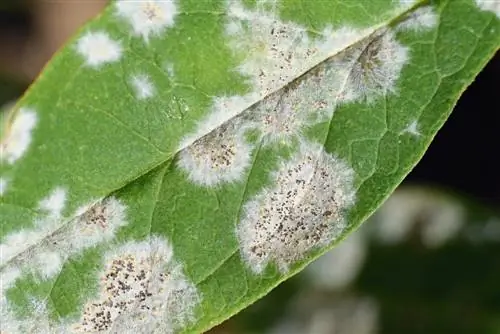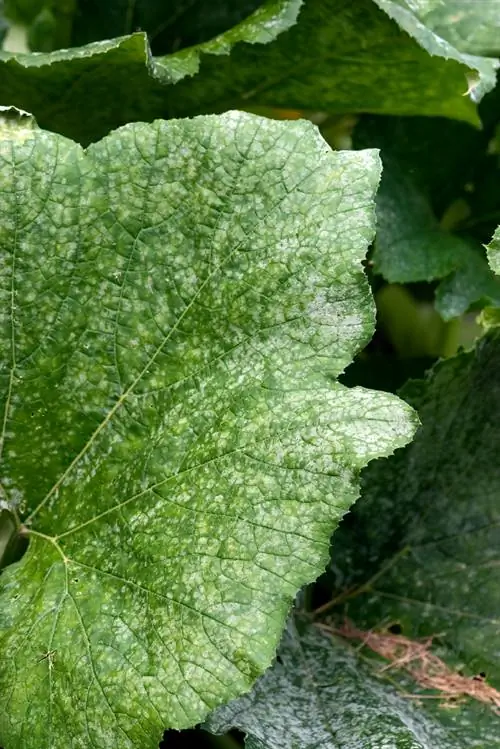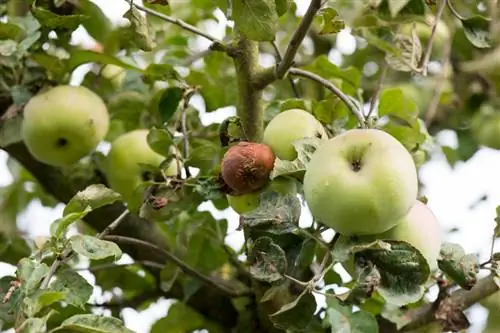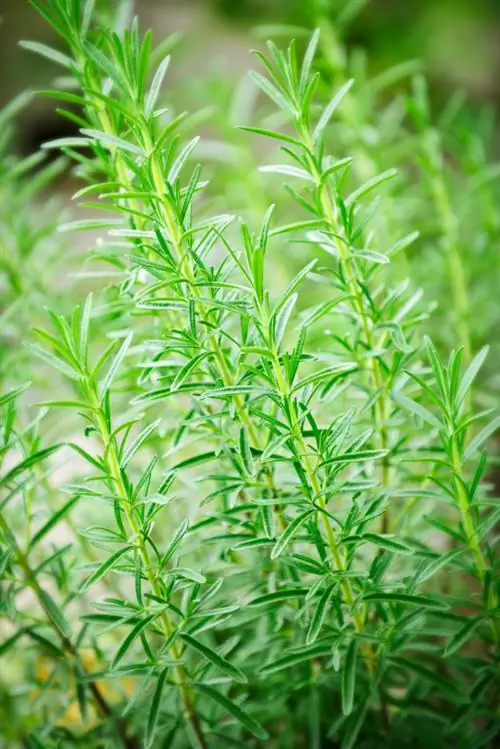- Author admin [email protected].
- Public 2023-12-16 16:46.
- Last modified 2025-01-23 11:21.
Although the lilac is considered a very robust and resistant plant, it can - like any other living being - become sick. Mildew fungi, which are omnipresent in nature, can also often be found on flowering bushes.

How to combat mildew on lilacs?
Lilac can be affected by powdery mildew and downy mildew, which are favored by warm, dry weather and rainy weather, respectively. Field horsetail decoction, garlic or tansy decoction can be used for prevention and treatment. Infected shoots and leaves should be removed.
Powdery mildew
Powdery mildew, also known as “fair weather mildew”, loves warm, dry weather. Its spores are spread primarily by the wind, but also by various insects, and can even survive a frosty winter. So if your lilac shows the typical signs, you should take action. It's best to spray the lilac regularly with a home-made horsetail decoction once it leaves.
Downy mildew
In contrast to the “fair weather fungus”, downy mildew prefers rainy weather. It occurs most often in humid summers, but like powdery mildew, it can be easily controlled or prevented with field horsetail decoction. You should also remove infected shoots and leaves. Chemical agents are generally not necessary for either form.
Tip
Instead of a decoction made from field horsetail, you can also make one made from garlic or tansy. As a preventive measure, lilacs should always be planted in a sunny location with a sufficiently large planting distance.






